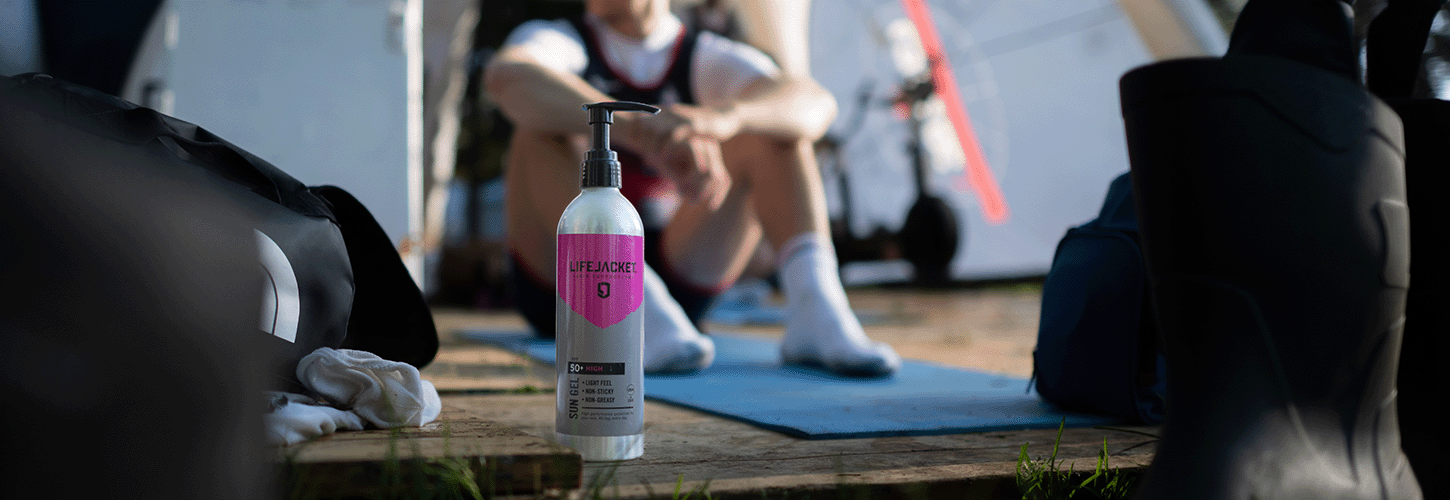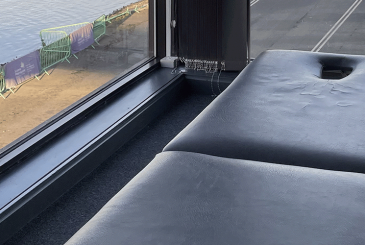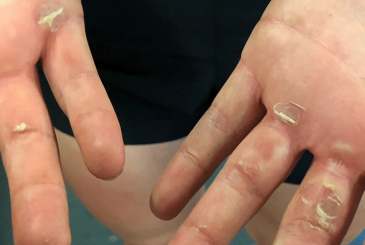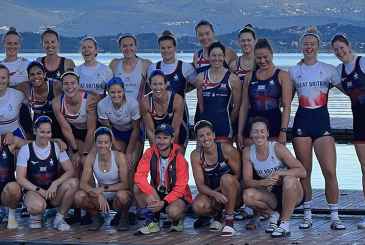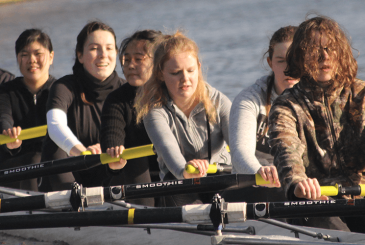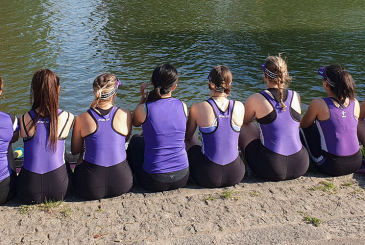Your skin needs your help to keep it safe and protected. And not just on those summer days when the sun is blazing, but 365 days a year...
As British Rowing’s Official Skin Protection Provider LifeJacket explains, a few easy steps on a daily basis are all that’s needed to protect the short and long term health of your skin.
Skin safety first
Life’s busy, right? So it’s understandable that looking after your skin can sometimes be missed. That’s why we’re advocates of incorporating good skin habits into your daily routine. It means that your skin health is one less thing to worry about, just by adding a minute a day to your routine.
Those who enjoy being outdoors and active are at an elevated risk when it comes to skin damage. More on this shortly. And for those who enjoy being outdoors and on the water – like rowers – the risk is amplified due to UV reflecting off the water’s surface, in effect doubling your exposure.
So think of skin protection as part of your safety kit.
After reading this, you’ll understand how to avoid getting into rough water when it comes to your skin. You’ll learn how to protect it all year round, whatever the weather, so you (hopefully) avoid any serious and not-so-serious skin issues.
Understand your skin
It’s easy to take your skin for granted but it’s your largest organ and deserves your attention. From regulating the body’s temperature to defending against foreign substances and also communicating information about the environment, skin plays a pivotal biological role in your body’s broader system..
One of the skin’s most important jobs is protecting your body from environmental ‘stressors’, which can impact the health of your skin on a daily basis. Failure to look after your skin health can render it unable to perform its main job of protecting you.
We’re all familiar with wrinkles, with having a tan, and with skin cancer. All of these represent a form of damage and, while they may be at different points of the skin damage spectrum, limiting them is something that’s within our control.
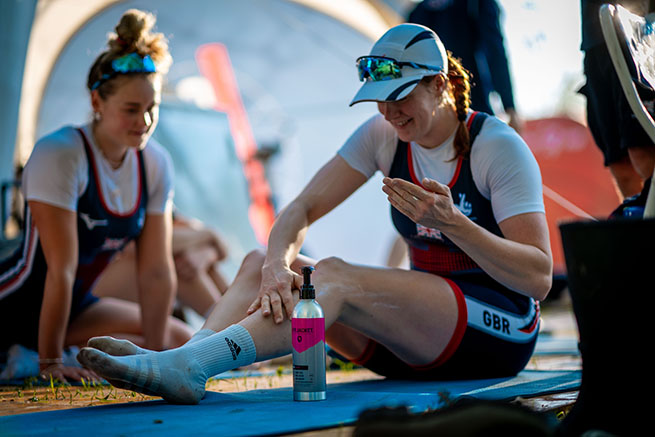
Six skin protection tips for rowers
Knowing all this, here are our essential skin protection tips for you and your skin.
Tip 1. YoU’Ve been warned
The environmental aggressors that can have an impact on our skin health include harsh weather, pollution, air-conditioning and even stress. However, the greatest threat to your skin is overexposure to ultraviolet (UV) rays, which are responsible for 80% of premature skin ageing and 90% of melanoma skin cancers.
There can be a tendency to only think about protecting your skin from UV rays during a warm summer, when on holiday or when we can see the sun in the sky. While UVB rays are stronger during hot, sunny weather and cause our skin to burn, they only account for 5% of all UV that reaches us.
The other 95% comes in the form of UVA rays. UVA is equally potent all year round and it can penetrate clouds and glass but also reflect off surfaces. Unlike overexposure to UVB rays, the result of which is burning, damage from UVA rays is not immediately visible or apparent. UVA rays penetrate the skin deeper than UVB rays, contributing to a range of damage that accumulates over time, only revealing itself years, even decades later. This includes skin cancer.
So, for any time on the water – any time of year – use a good sunscreen on all exposed skin before heading outside. We recommend a minimum of SPF 30 and the European ‘UVA’ kite mark (or UVA 4-5*). Choose a product that’s water resistant – typically an oil or a mineral-based sunscreen. No sunscreen can stay on your skin all day and protection levels will inevitably diminish if you’re getting sprayed by water, sweating or towelling. So if in any doubt, reapply regularly and don’t forget your lips, nose, back of the neck and ears – commonly missed spots where people often burn.
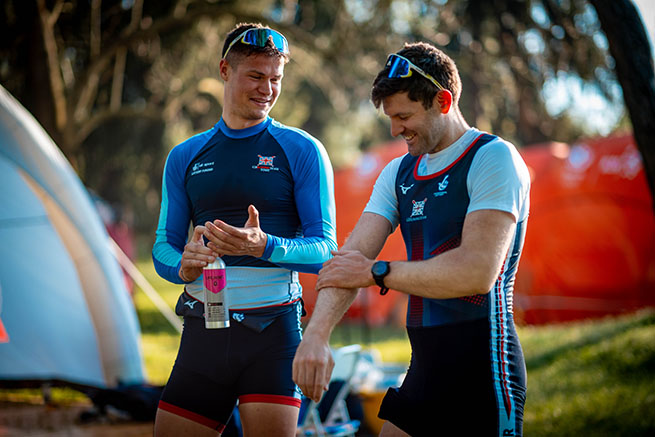
Tip 2. Think about your ‘threads’
Another way to protect the skin is by wearing a physical barrier that blocks attack i.e. clothing. But beware – not all fabrics are created equal. For example, a white cotton t-shirt is only the equivalent of SPF 5 so your skin can still be damaged.
Ultraviolet Protection Factor (UPF) is to fabrics what SPF is to sunscreen. It’s a measure of how much UV protection the fabric provides. Denim is UPF 1,700 so it’s super protective but jeans are obviously no use when you are out on the water.
You want a fabric that suits what you are doing and that won’t cause problems when in the boat. One that is quick drying and moisture wicking is ideal. Look out for UPF 50+ active wear. It’s a good option because the protection is in-built and always ‘on’ plus it doesn’t degrade over the course of the day..
Tip 3. Head, lips and back of neck, back of neck
You don’t have the luxury of seeking shade when out on the water, so make sure you’ve taken all necessary steps to protect your skin before you boat. In particular, your head especially is highly exposed and while hair does a great job of blocking much of the UV aimed at your scalp, those who are bald, thinning or have a close cut on top should be especially careful.
A really good option is finding a hat that stays on and which has a wide brim to cover your neck and face too. There are breathable, lightweight, UPF 50+ variants out there. It’s a whole lot better than a sunburnt head or sun stroke.
Also remember your lips even if they don’t normally need any special attention. Lips don’t produce sebum so can quickly become dry. They also burn more easily than other areas of skin. Keep an SPF lip balm in a pocket (or down a sock when rowing) for both UV protection and moisture. Reapply constantly throughout the day.
Tip 4. Protect your eyes
For the same reasons that you should protect your skin from UV every day, we should probably all wear sunglasses more often than we think.
Protecting your eyes against sunlight and glare from water is really important for your eye health. UV levels can be high even on a cloudy day and overexposure can lead to painful inflammation, known as ‘snow blindness’. It can also increase the likelihood of developing cataracts.
Sunglasses with UV400 protection (or which have the CE kite mark) and polarized lenses are a critical piece of kit. Low quality lenses can cause more harm than good.
Tip 5. No more chafing
Chafing occurs when there’s repeated friction between skin and clothing (or equipment), leading to irritation, redness, and even blisters. This is a painful phenomenon that rowers will be all too aware of when it comes to their hands and buttocks.
Continual rubbing of the skin’s outer layer (the epidermis) causes microscopic tears and that layer of skin can wear away, leaving the layer beneath it exposed. LifeJacket’s consultant dermatologist Professor Christian Aldridge explains, “Chafing or friction dermatitis is principally caused by skin rubbing against skin, clothing or other materials, leading to sore, red inflamed skin which can crack, weep and even bleed if severe.” Given the skin’s role in protecting your body from the outside world, this is something you need to try and avoid.
You can find rowing-specific advice on how to improve your skin’s barrier function here.
Tip 6. End of day skin protection routine
Recovery is a key step in enabling you to go again tomorrow and this is true of your skin too. Winter or summer elements are equally tough on your skin so a year-round routine can make a big difference.
Keeping your skin hydrated is an important step and to this end moisturisers can do two things depending on their ingredients: form a layer to block water leaving, or try and add water to the epidermis. Use what you like and apply after washing.
When we say ‘routine‘, we simply mean cleaning your face at night and moisturising in the morning and evening. Both can take as little as 30 seconds and will really help your skin repair itself after being thrashed about.
Apply straight after a bath or shower to seal in moisture while your skin is damp. Don’t forget about your hands and body – they definitely won’t say ‘no’ to a daily layer of added moisture!
Photos: LifeJacket Skin Protection.


